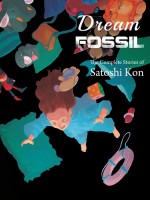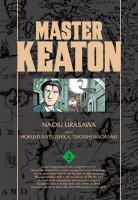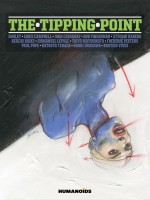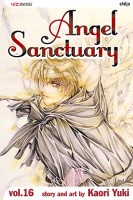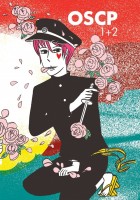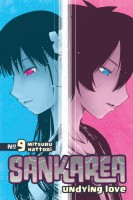If you’re a connoisseur of British crime procedurals, you’ve undoubtedly watched Midsomer Murders, England’s answer to Murder, She Wrote. It isn’t the edgiest or smartest mystery series on television, but it is among the most consistently enjoyable, delivering a satisfying answer to the question, “Whodunnit?” at the end of every episode. Much of the series’ appeal lies with its formula: someone commits a ghastly murder, prompting DCI Barnaby to scrutinize the crime scene, interrogate reluctant witnesses, and suss out hidden clues before assembling the suspects to reveal the killer’s identity and motives. This formula is flexible enough to offer a new murder scenario every week, yet predictable enough to reassure viewers that there’s a payoff for keeping track of the subplots and false leads that frustrate Barnaby’s efforts to solve the mystery.
Master Keaton — a joint effort by Hokusai Katsushika and Naoki Urasawa — offers the same kind of experience in manga form. Every volume features an assortment of mysteries, all solved by the brilliant investigator Taichi Hiraga Keaton. (In an original touch, Keaton works for an insurance agency, though he frequently moonlights as a private eye.) Though the stories’ denouements occasionally veer into Scooby Doo territory — more on that later — Katsushika and Urasawa have a knack for spinning a good yarn, whether the story involves lost Nazi gold or a conscience-stricken assassin.
One key to Katsushika and Urasawa’s success is that they carefully adhere to the same basic rules as Midsomer Murders, setting each mystery in a community where resentments fester, secrets abound, and strong personalities clash. Katsushika and Urasawa put a fresh spin on this storytelling technique by choosing a new locale for each story, rather than limiting the action to a fictional English county, a la Midsomer. In volume eleven, for example, Keaton flits from East Germany to the Scottish highlands to a haunted London mansion. As disparate as these settings may be, each is as much “a cauldron” or “microcosm” as a country village — to borrow a phrase from Midsomer creator Anthony Horowitz — thus creating the right setting “for something unpleasant — a murder, for example — to take place.”
Consider “The Lost Genius Director,” one of the shortest, most tightly plotted stories in volume 11. In just two pages, Katsushika and Urasawa create a virtual “village” populated with vivid characters: a perfectionist director, his devoted wife, a vain leading man, and a nervous producer who’s caught between the director’s vision and the bottom line. All of these characters are living and working in close proximity on the set, clashing over the director’s insistence that the cast re-shoot several key scenes. When the director is found dangling from a noose, Keaton discovers a video of the victim’s final moments, a video that first implicates, then exonerates, the most obvious suspect. This narrative feint makes the actual “reveal” more satisfying, as we come away from the story feeling as if we were just a step or two behind Keaton in solving the crime.
The few stories that falter do so because Katsushika and Urasawa violate this second unspoken rule of whodunnits. In “Love from the Otherworld” and “Lost Beyond the Wall,” the endings feel arbitrary; there simply aren’t enough clues to justify the outcome of the story. The problem is especially acute in “Otherworld,” a supernatural mystery that plays out like a classic Scooby Doo episode: a book publisher hires Keaton to investigate a ghost who’s been roaming the halls of his mansion. Though it doesn’t take a great leap of imagination to realize that one of the household members is, in fact, “the ghost,” the story is so compressed that we don’t learn enough about the characters to independently arrive at the same conclusion as Keaton. More frustrating still, the denouement is handled in such a bald, clumsy fashion that the culprit all but declares, “And I would have gotten away with it, too, if it hadn’t been for you meddling kids and that darn dog!”
It’s easy to overlook the few clunkers, however, as Katsushika and Urasawa clearly have a deep love for the mystery genre. Nowhere is that more evident in “Return of the Super Sleuth?!” and “Pact on Ben-Tan Mountain,” two stories that knowingly borrow elements from Rear Window and Strangers on a Train. Both stories honor the spirit of the source material, preserving the most important details while finding new and surprising ways to resolve these famous plotlines. Equally important, Katsushika and Urasawa don’t take any narrative shortcuts on the way to revealing whodunnit, granting the reader the same delicious sense of closure characteristic of Midsomer Murders — or, I might add, Alfred Hitchcock Presents. Recommended.
A review copy was provided by VIZ Media.
MASTER KEATON, VOL. 11 • STORY BY HOKUSAI KATSUSHIKA AND NAOKI URASAWA, ART BY NAOKI URASAWA • TRANSLATED BY JOHN WERRY • VIZ MEDIA • RATING: TEEN+ (OLDER TEENS) • 318 pp.
